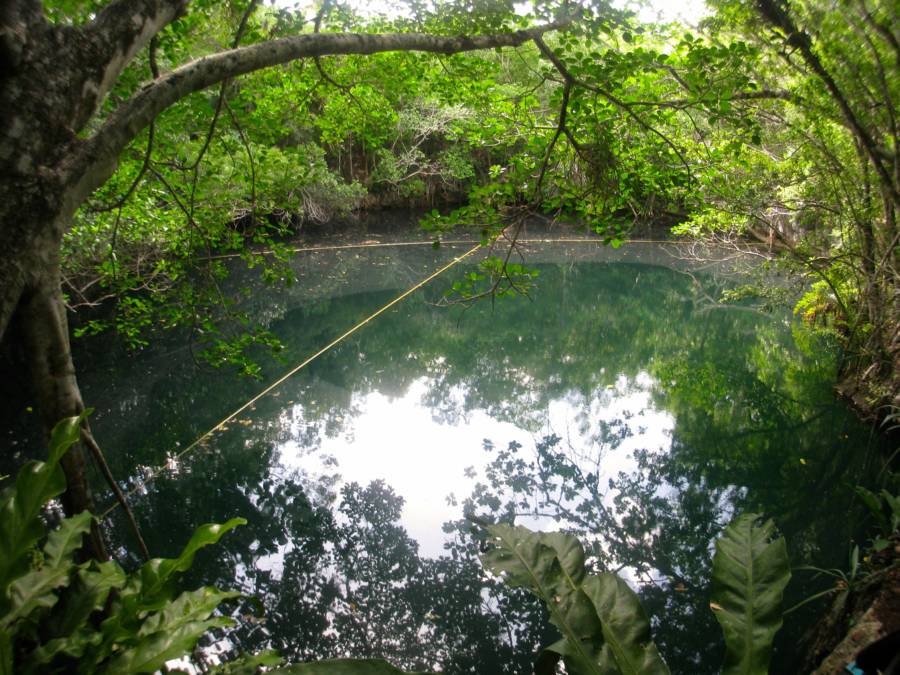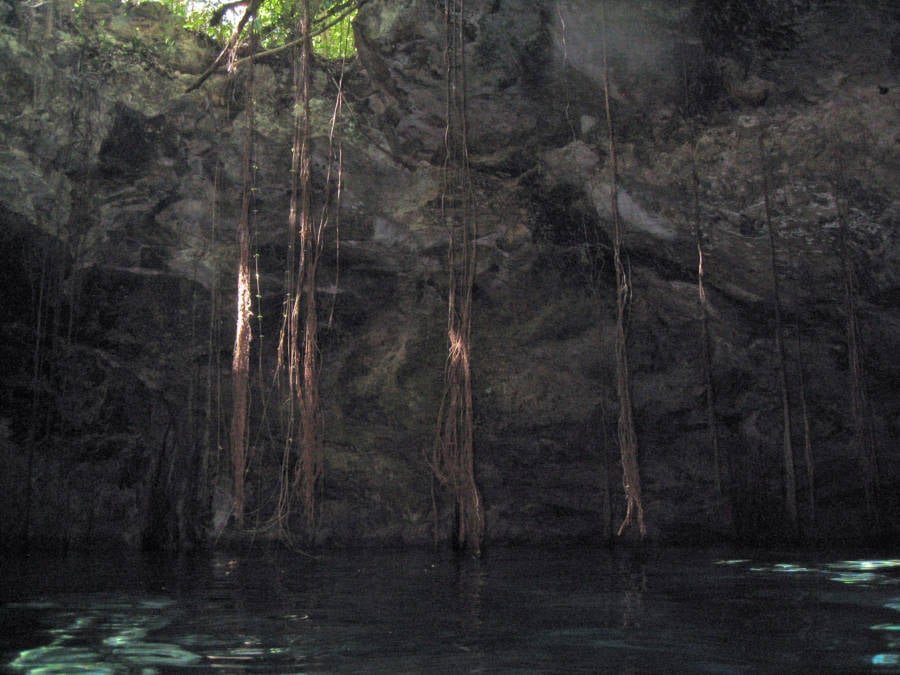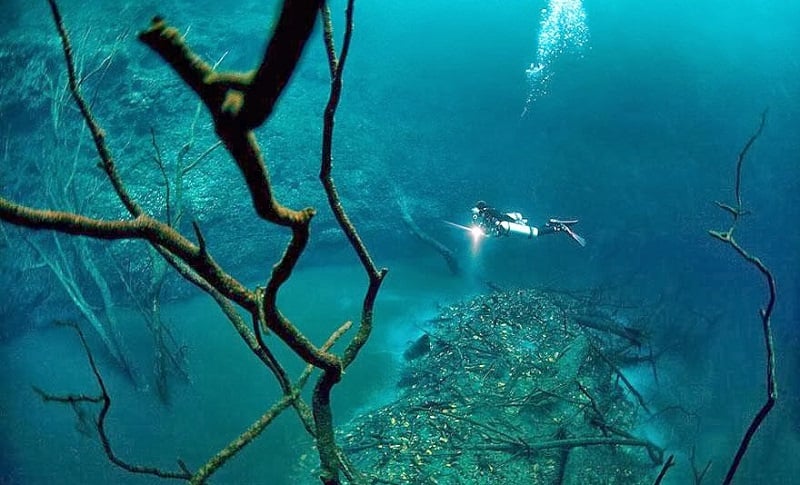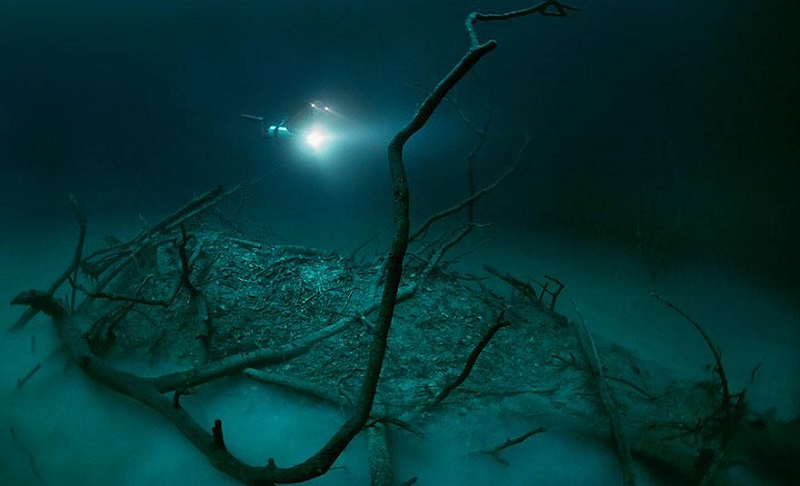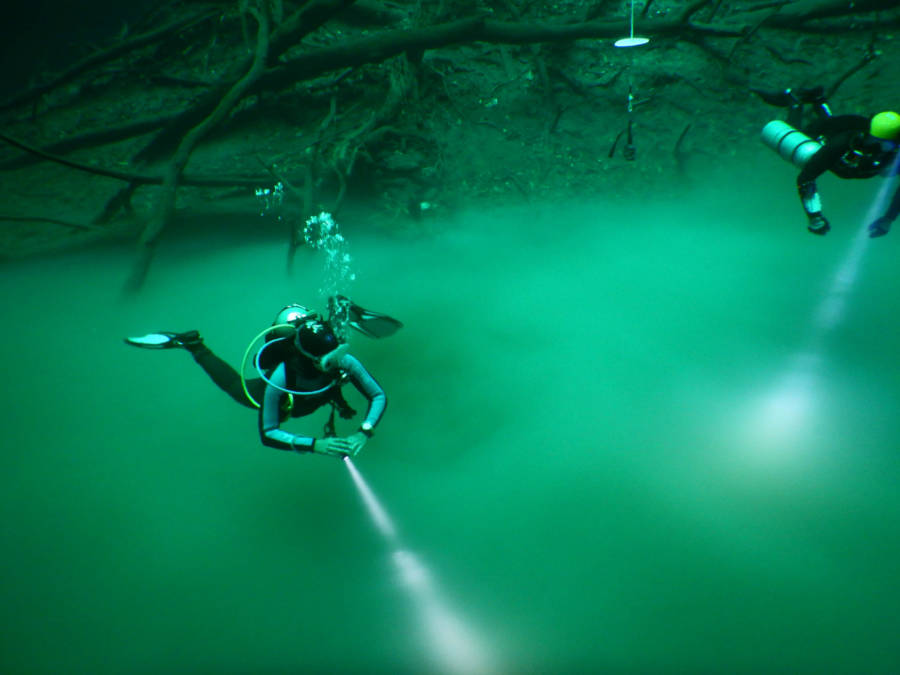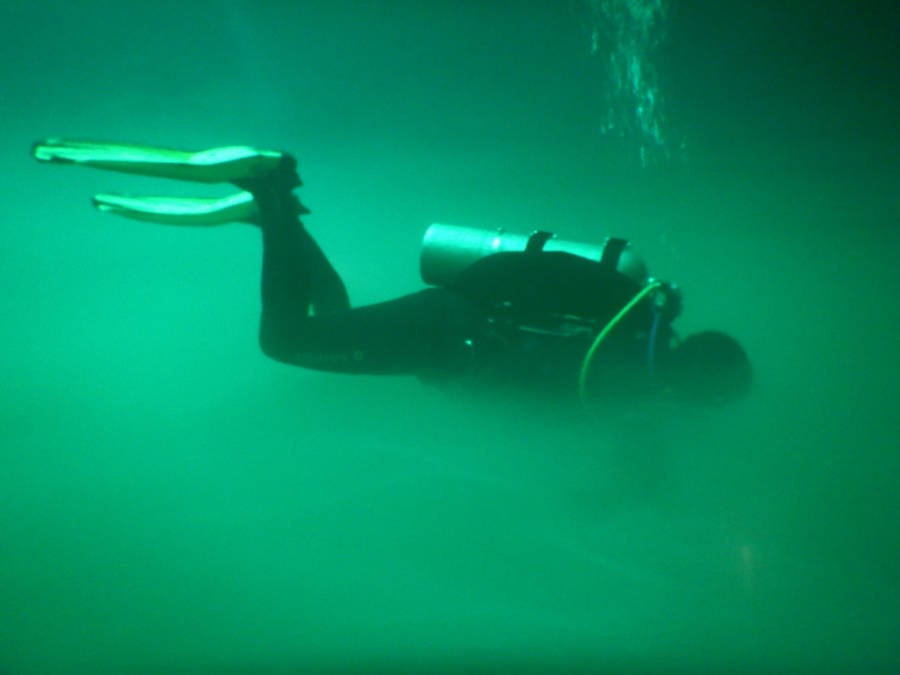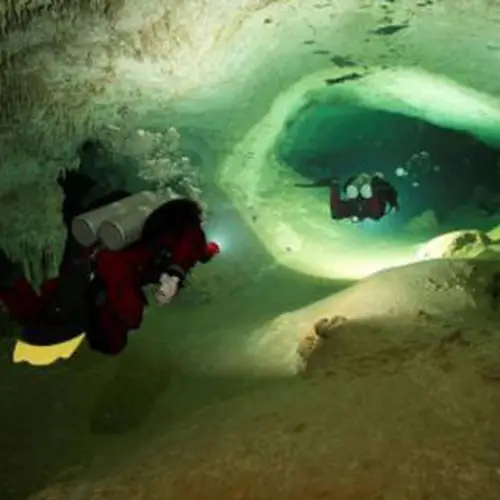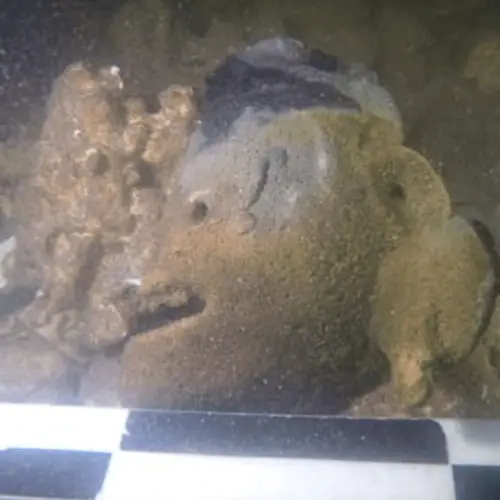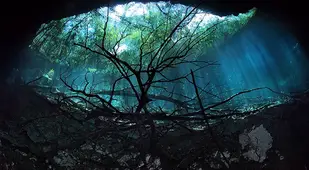The sinkholes of the Yucatán Peninsula are full of treasure: incredible dives, Maya artifacts, ancient human sacrifices, and the most unbelievable sight of all — an underwater river.
At first, the thought — let alone the existence — of an underwater river seems paradoxical, if not impossible. Yet an underwater river is precisely what a group of amateur cave explorers discovered when they went scuba diving in Cenote Angelita (Mexico's “Little Angel” sinkhole).
Land Of Cenotes

Ken Thomas/Wikimedia CommonsGran Cenote, near the municipality of Tulum.
A cenote is a sinkhole that forms when limestone bedrock collapses to expose groundwater below. These natural pits are often connected to subterranean water sources — and they sometimes contain deep underground cave systems.
The Yucatán Peninsula boasts nearly 7,000 cenotes. Why is the region so full of holes? For millions of years, when the Yucatán Peninsula was covered by the ocean, the sea creatures that made it their home shed their calcium-carbonate shells and bones on the seabed, where the tide compacted them into limestone.
Limestone is extremely porous, meaning that water passes through it easily. Where water runs, limestone rubs away, offering glimpses of seashells in sandy white walls and leaving behind lots of sinkholes — and one underwater river.
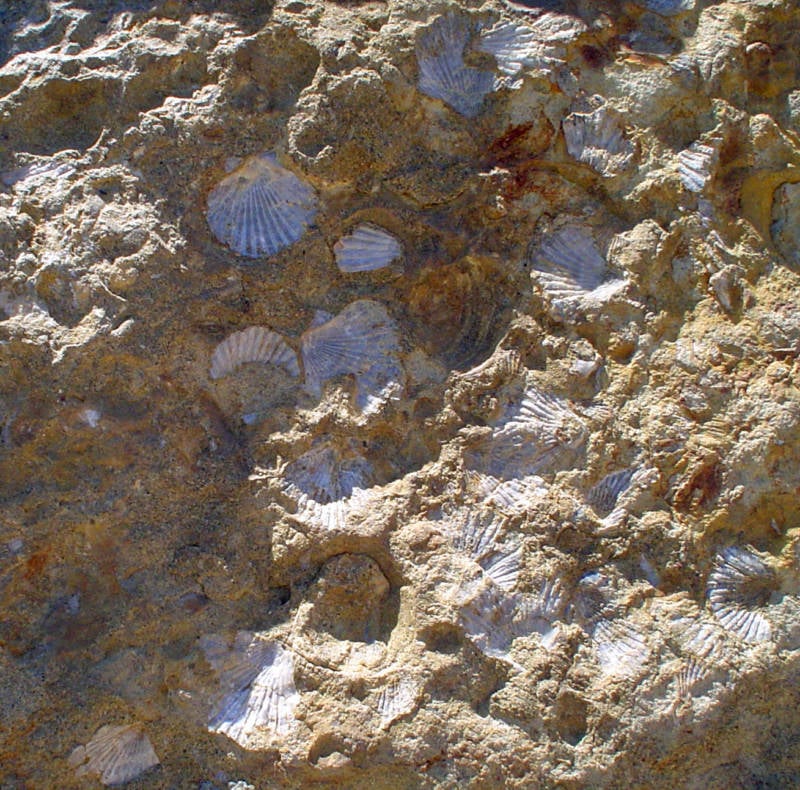

Wikimedia CommonsSeashells are clearly visible in this limestone wall, a reminder of the ocean's reach.
Maya Sacred Sites And Sacrifices
The early inhabitants of the Yucatán Peninsula, the Maya, found the beautiful sinkholes and gave them their name: cenotes, from the Maya word for "well."
For the Maya, the cenotes were holy sites and portals to other worlds. Gold and jade sacrifices have been dredged from sinkholes like Cenote Sagrado ("Sacred Cenote") — as have human remains.


Anagoria/Wikimedia CommonsCenote Sagrado, a site of Maya sacrifices where beautiful gold and jade artifacts as well as human remains have been found.
The bones belonged to men, women, and children, and they told stories. Wounds were consistent with human sacrifice, something that tallies with the accounts of explorers, who allegedly witnessed the Maya sacrifice humans to Chaac, the Maya rain god, by throwing people into sinkholes.
Not all cenotes were the sites of human sacrifices (you can't be throwing dead people in every water supply) — though when you see the photos of Cenote Angelita's underwater river, you'll definitely understand how the Mayas came to believe the caves might lead to spiritual planes.
How An Underwater River Works
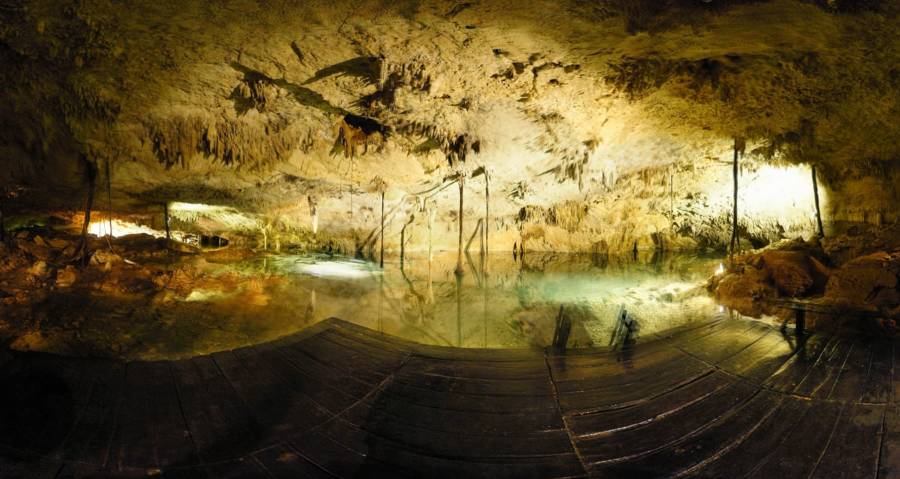

Darren Fry/FlickrThe Tak Be Ha Cenote in Mexico.
An underwater river occurs when waters with different densities form layers (think back to third-grade science experiments when teachers combined oil and water for a similar effect).
While the first 29 meters of Cenote Angelita are fresh water, the underwater river below is formed from a layer of water and hydrogen sulfide, which is significantly heavier. A halocline — a quick vertical change in salt concentration — forms at the point between the two layers of water, creating a cloudy phenomenon that resembles fog.
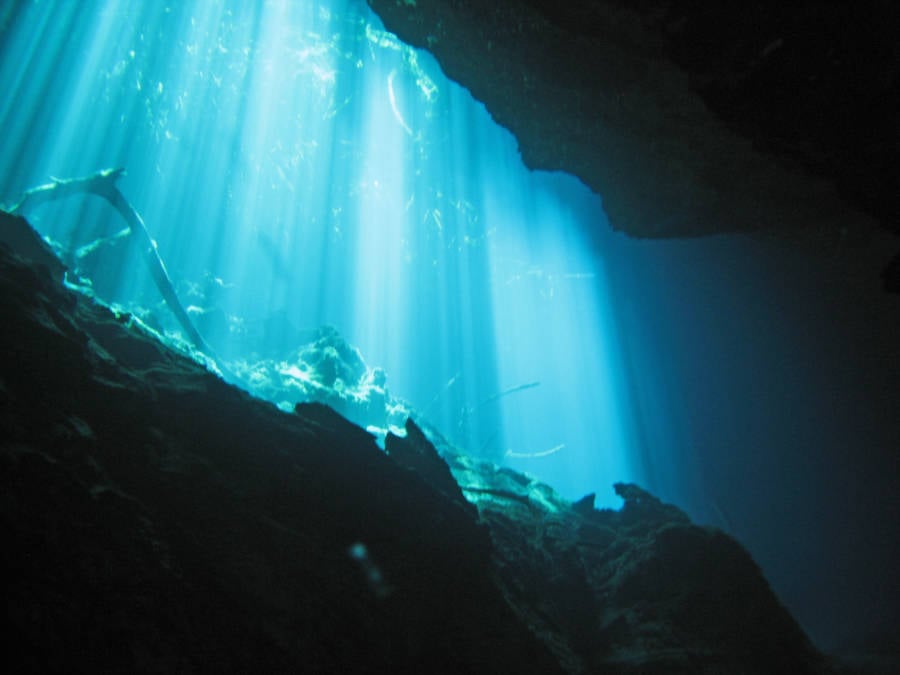

FlickrThe sea life of Mexico's cenotes is radically different above and below the halocline.
The result? Much of the underwater river looks and functions like a normal river. For instance, one can see the shore, marred by leaves, branches, and silt, punctuated by a roiling stream.
Those who have visited Cenote Angelita say it’s one of the world’s most surreal places.
Still can't wrap your head around the concept of an underwater river? You'll (almost) feel like you were there after watching this video:
For more out-of-this-world landscapes, explore the most surreal places around the globe, then check out this incredible underwater museum.
